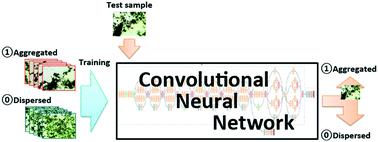当前位置:
X-MOL 学术
›
Environ. Sci.: Water Res. Technol.
›
论文详情
Our official English website, www.x-mol.net, welcomes your feedback! (Note: you will need to create a separate account there.)
Deep learning-based morphology classification of activated sludge flocs in wastewater treatment plants
Environmental Science: Water Research & Technology ( IF 5 ) Pub Date : 2020-12-16 , DOI: 10.1039/d0ew00908c Hisashi Satoh 1, 2, 3, 4, 5 , Yukari Kashimoto 1, 2, 3, 4, 5 , Naoki Takahashi 5, 6, 7 , Takashi Tsujimura 5, 6, 7
Environmental Science: Water Research & Technology ( IF 5 ) Pub Date : 2020-12-16 , DOI: 10.1039/d0ew00908c Hisashi Satoh 1, 2, 3, 4, 5 , Yukari Kashimoto 1, 2, 3, 4, 5 , Naoki Takahashi 5, 6, 7 , Takashi Tsujimura 5, 6, 7
Affiliation

|
Microscopy inspection of the morphology of activated sludge (AS) flocs can provide important information regarding the AS properties, which strongly affect the performance of AS systems. However, the acquisition of such information from microscopy inspection results requires skilled and specialized expertise. In this study, we aimed to develop two deep learning-based two-label classifiers for recognizing aggregated or dispersed flocs (classifier-1) and the presence or absence of filamentous bacteria (classifier-2). To achieve this, we used a convolutional neural network (CNN)-based method and selected the pre-trained Inception v3 as the CNN architecture. We developed an automatic microscopy image acquisition system, enabling us to obtain 154 images for 7 min. Over 12 000 images of aggregated and dispersed flocs were obtained from wastewater treatment plant (WWTP)-S and -E over 15 weeks. Classifier-1 was retrained using these images. Classifier-1 distinguished the aggregated and dispersed flocs with a training accuracy of approximately 95% and recognized a 20% morphological change in the aggregated flocs. Classifier-1 also recognized the morphology of AS flocs obtained from other WWTPs, the AS from which was used for retraining. Classifier-2 quantitatively recognized an abundance of filamentous bacteria in the AS flocs. These results clearly indicated that the developed image classification model could serve as a useful warning system for the settleability deterioration and abundance of filamentous bacteria in the aeration tank of a full-scale AS system.
中文翻译:

基于深度学习的污水处理厂活性污泥絮体形态分类
显微镜检查活性污泥(AS)絮凝物的形态可以提供有关AS性能的重要信息,这会严重影响AS系统的性能。但是,从显微镜检查结果中获取此类信息需要熟练和专门的专业知识。在这项研究中,我们旨在开发两个基于深度学习的两标签分类器,用于识别聚集的或分散的絮凝物(分类器1)以及是否存在丝状细菌(分类器2)。为此,我们使用了基于卷积神经网络(CNN)的方法,并选择了预训练的Inception v3作为CNN体系结构。我们开发了自动显微镜图像采集系统,使我们能够在7分钟内获得154张图像。在15周内,从废水处理厂(WWTP)-S和-E获得了超过12000张聚集和分散的絮凝物图像。使用这些图像对分类器1进行了重新训练。分类器1以约95%的训练准确度区分了聚集的絮凝物和分散的絮凝物,并认识到聚集絮凝物的形态变化为20%。分类器-1还认识到从其他污水处理厂获得的AS絮状物的形态,AS被用于再训练。分类器2定量识别AS絮状物中大量的丝状细菌。这些结果清楚地表明,所开发的图像分类模型可以作为有用的预警系统,用于全面AS系统的曝气池中丝状细菌的沉降性降低和丰富。使用这些图像对分类器1进行了重新训练。分类器1以约95%的训练准确度区分了聚集的絮凝物和分散的絮凝物,并认识到聚集的絮凝物的形态变化为20%。分类器-1还认识到从其他污水处理厂获得的AS絮状物的形态,AS被用于再训练。分类器2定量识别AS絮状物中大量的丝状细菌。这些结果清楚地表明,所开发的图像分类模型可以作为有用的预警系统,用于全面AS系统的曝气池中丝状细菌的沉降性降低和丰富。使用这些图像对分类器1进行了重新训练。分类器1以约95%的训练准确度区分了聚集的絮凝物和分散的絮凝物,并认识到聚集的絮凝物的形态变化为20%。分类器-1还认识到从其他污水处理厂获得的AS絮状物的形态,AS被用于再训练。分类器2定量识别AS絮状物中大量的丝状细菌。这些结果清楚地表明,所开发的图像分类模型可以作为有用的预警系统,用于全面AS系统的曝气池中丝状细菌的沉降性降低和丰富。分类器1以约95%的训练准确度区分了聚集的絮凝物和分散的絮凝物,并认识到聚集的絮凝物的形态变化为20%。分类器-1还认识到从其他污水处理厂获得的AS絮状物的形态,AS被用于再训练。分类器2定量识别AS絮状物中大量的丝状细菌。这些结果清楚地表明,所开发的图像分类模型可以作为有用的预警系统,用于全面AS系统的曝气池中丝状细菌的沉降性降低和丰富。分类器1以约95%的训练准确度区分了聚集的絮凝物和分散的絮凝物,并认识到聚集的絮凝物的形态变化为20%。分类器-1还认识到从其他污水处理厂获得的AS絮状物的形态,AS被用于再训练。分类器2定量识别AS絮状物中大量的丝状细菌。这些结果清楚地表明,所开发的图像分类模型可以作为有用的预警系统,用于全面AS系统的曝气池中丝状细菌的沉降性降低和丰富。分类器2定量识别AS絮状物中大量的丝状细菌。这些结果清楚地表明,所开发的图像分类模型可以作为有用的预警系统,用于全面AS系统的曝气池中丝状细菌的沉降性降低和丰富。分类器2定量识别AS絮状物中大量的丝状细菌。这些结果清楚地表明,所开发的图像分类模型可以作为有用的预警系统,用于全面AS系统的曝气池中丝状细菌的沉降性降低和丰富。
更新日期:2020-12-16
中文翻译:

基于深度学习的污水处理厂活性污泥絮体形态分类
显微镜检查活性污泥(AS)絮凝物的形态可以提供有关AS性能的重要信息,这会严重影响AS系统的性能。但是,从显微镜检查结果中获取此类信息需要熟练和专门的专业知识。在这项研究中,我们旨在开发两个基于深度学习的两标签分类器,用于识别聚集的或分散的絮凝物(分类器1)以及是否存在丝状细菌(分类器2)。为此,我们使用了基于卷积神经网络(CNN)的方法,并选择了预训练的Inception v3作为CNN体系结构。我们开发了自动显微镜图像采集系统,使我们能够在7分钟内获得154张图像。在15周内,从废水处理厂(WWTP)-S和-E获得了超过12000张聚集和分散的絮凝物图像。使用这些图像对分类器1进行了重新训练。分类器1以约95%的训练准确度区分了聚集的絮凝物和分散的絮凝物,并认识到聚集絮凝物的形态变化为20%。分类器-1还认识到从其他污水处理厂获得的AS絮状物的形态,AS被用于再训练。分类器2定量识别AS絮状物中大量的丝状细菌。这些结果清楚地表明,所开发的图像分类模型可以作为有用的预警系统,用于全面AS系统的曝气池中丝状细菌的沉降性降低和丰富。使用这些图像对分类器1进行了重新训练。分类器1以约95%的训练准确度区分了聚集的絮凝物和分散的絮凝物,并认识到聚集的絮凝物的形态变化为20%。分类器-1还认识到从其他污水处理厂获得的AS絮状物的形态,AS被用于再训练。分类器2定量识别AS絮状物中大量的丝状细菌。这些结果清楚地表明,所开发的图像分类模型可以作为有用的预警系统,用于全面AS系统的曝气池中丝状细菌的沉降性降低和丰富。使用这些图像对分类器1进行了重新训练。分类器1以约95%的训练准确度区分了聚集的絮凝物和分散的絮凝物,并认识到聚集的絮凝物的形态变化为20%。分类器-1还认识到从其他污水处理厂获得的AS絮状物的形态,AS被用于再训练。分类器2定量识别AS絮状物中大量的丝状细菌。这些结果清楚地表明,所开发的图像分类模型可以作为有用的预警系统,用于全面AS系统的曝气池中丝状细菌的沉降性降低和丰富。分类器1以约95%的训练准确度区分了聚集的絮凝物和分散的絮凝物,并认识到聚集的絮凝物的形态变化为20%。分类器-1还认识到从其他污水处理厂获得的AS絮状物的形态,AS被用于再训练。分类器2定量识别AS絮状物中大量的丝状细菌。这些结果清楚地表明,所开发的图像分类模型可以作为有用的预警系统,用于全面AS系统的曝气池中丝状细菌的沉降性降低和丰富。分类器1以约95%的训练准确度区分了聚集的絮凝物和分散的絮凝物,并认识到聚集的絮凝物的形态变化为20%。分类器-1还认识到从其他污水处理厂获得的AS絮状物的形态,AS被用于再训练。分类器2定量识别AS絮状物中大量的丝状细菌。这些结果清楚地表明,所开发的图像分类模型可以作为有用的预警系统,用于全面AS系统的曝气池中丝状细菌的沉降性降低和丰富。分类器2定量识别AS絮状物中大量的丝状细菌。这些结果清楚地表明,所开发的图像分类模型可以作为有用的预警系统,用于全面AS系统的曝气池中丝状细菌的沉降性降低和丰富。分类器2定量识别AS絮状物中大量的丝状细菌。这些结果清楚地表明,所开发的图像分类模型可以作为有用的预警系统,用于全面AS系统的曝气池中丝状细菌的沉降性降低和丰富。



























 京公网安备 11010802027423号
京公网安备 11010802027423号